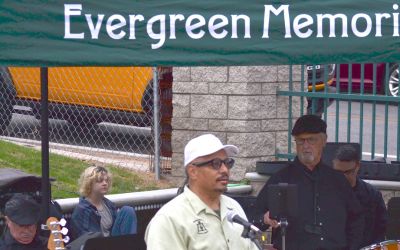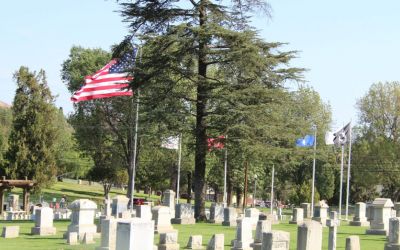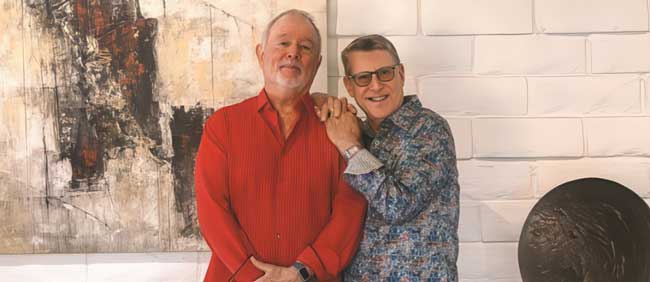 Ongoing efforts to reimagine Evergreen Memorial Historic Cemetery (EMHC) in Riverside are suddenly being buoyed by modern-day tweaks.
Ongoing efforts to reimagine Evergreen Memorial Historic Cemetery (EMHC) in Riverside are suddenly being buoyed by modern-day tweaks.
Thanks to the development of apps, QR codes, and events hosted by the cemetery, discovering new facets of the region’s history and some of the vital souls who helped shape it, has become much easier.
To that end, the nonprofit has developed an app called EMHC, which is akin to a tour of the cemetery, the oldest in Riverside, and includes vital history, information, and videos.
“It’s the cemeteries where history and community come together,” says Etienne Caroline, former president of EMHC, who continues to play an active role in the organization. “Riverside is Riverside because of the people here and the people that came before us. The cemetery reflects that.”
Resting at the base of Mount Rubidoux in Riverside, the cemetery was founded in 1872, erected by former Union soldiers. Caroline is quick to note that there are more than 27,000 beings interred on the site, so many of regional and national significance.
Additionally, more than 1,500 individuals occupy the historic portion of the cemetery and include some of Riverside’s most notable founders.
To be sure, learning more about Riverside’s founder, John Wesley North—also the president of the 1870 Southern California Colony Association—will become one swipe easier. And here’s to the hard work of Luther and Eliza Tibbets, founders of the citrus industry, who deserve a newfound spotlight.
“We want people to more clearly understand this is where community and history come together,” Caroline says. “And that comes from telling the stories. That comes from sharing that information.”
 It’s all part of a creative and enthusiastic push to not only share Riverside’s unique history but to also engage locals more with the area’s past and the ever-evolving nature of cemeteries, in general.
It’s all part of a creative and enthusiastic push to not only share Riverside’s unique history but to also engage locals more with the area’s past and the ever-evolving nature of cemeteries, in general.
A recent grant from the Fred Stebler and Eva V. Stebler Foundation Designated Fund via Inland Empire Community Foundation (IECF) will aid greatly in those efforts. Caroline says the IECF grant allows the nonprofit to funnel funding into projects designed to share vital information and establish community-building.
He cites an upcoming development that will offer QR codes that would allow locals to scan from their smart phones, then be referred to information about the cemetery.
“Basically, when you come in, you can use the QR code, then go to places and see the historic things listed there,” Carolin says. “It will be a kind of a catalog or library for short videos about a person, and maybe include a narrative.
“We’re trying to look at things in a forward-thinking way so that people can be more exposed to more aspects of cemetery and history,” Caroline adds, pointing out that from the region’s historic orange groves to the Mission Inn, the area is a bona fide utopia of California milestones.
“We’d like people to visit, inquire, and become a part of things here,” he says. “We recently did a pumpkin patch for the little kids, then a cinema night where we screened Beetlejuice.”A fitting place for that comedy horror romp, in fact. Caroline says the event drew in about 400 people.
Yet another event is slated for Nov 16, when EMHC will celebrate being placed on a national list of historic places in the United States.
The Evergreen Cemetary [sic] Association was established as a non-profit organization in 1872. The spelling of the word cemetery was later changed. Lush and home to many palm trees, the cemetery became an honorable haven for the deceased.
Efforts to restore EHMC began more than 20 years ago in 2003. The project became a success and assured future funding for the cemetery and paving a viable path for the region’s rich history to live on.
Learn more at www.evergreen-cemetery.info.
This story originally appeared in The Press-Enterprise, November 2024
Stay up to date on all the good work we’re doing through the power of philanthropy. Sign up for our eNewsletter, Philanthropy Matters, today.



